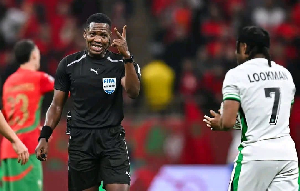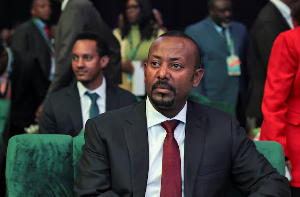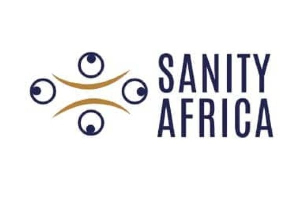Alhaji Abdulai Haruna Friday, the Tamale Metropolitan Chief Executive, highlighted at a Town Hall Meeting in Tamale on Thursday13th January 2011 that pupils in the Tamale Metropolis have, for seven years, been performing poorly at the Basic Education Certificate Examination (BECE). The statistics showed that in 2004 the Metropolis was 60th on the BECE league table and in 2005 and 2006 it was the 69th and 88th respectively. In 2007 and 2008 it placed 91st and 89th respectively and for 2009 and 2010 it was incredibly 98th and 103rd respectively.
Even though it is common knowledge that many schools are performing badly nationwide, reading the news about this consistent poor performance was depressing. What is surprising and indeed depressing about the Tamale case is that the results show a rapid slip into the abyss. The poor performance is both consistent and deteriorating from year to year. And it is apparent that Tamale is contradiction at two levels. Firstly, the Tamale picture contradicts the usual notion that urban schools provide better quality education and by extension better educational outcome for pupils. In other words, the urban-rural disparity in the quality of education, which much of the available research usually confirms is completely nullified here. Secondly, if Tamale was registering such a pattern in the 1960s and early 1970s, one could have accepted these results with some bold rationalization centering on the fact that there were few trained teachers in schools populated by children from predominantly illiterate parent /family backgrounds. However the story is different today and it is important for us to consider this as a sign that all is not going well for education in the northern region. This is a serious matter that demands a swift and comprehensive action from a broad spectrum of the society, rather than just placing the blame at the feet of the GES and teachers.
In order to grasp the magnitude of this consistent poor performance we need to evaluate the potential impact of the poor performance on some existing demoralizing youth issues plaguing the north. These issues include the popular Kayayo phenomenon, which derives directly from the lack of schooling or poor educational outcomes among young girls from the north; high levels of school drop out or non-completion and significant levels of youth unemployment.
It is obvious that the phenomenal increase in the percentage of students not passing the required examinations is certainly going to exacerbate the situation of limited numbers of students from the north who gain access to university education and entrench the existing geographic inequality in educational and human resources development. According to the 2003 state of Ghana population report (GOG/UNFPA) only 10% of Ghana’s secondary schools produced some 70 per cent of students admitted into the University of Ghana, Legon and the Kwame Nkrumah University of Science and Technology in the late 1990s. Similarly, The Statesman, 29th August, 2002, quoted the Vice-chancellor of UG, Legon Professor Ivan Addae Mensah as observing that seven secondary schools alone provided over 51% of the intake to our medical schools. And that such inequity of university intake was a pointer to the broader issues of access to university education and a trend towards increased educational exclusion. At the time of that report, only three secondary schools in the north managed to produce students who sporadically gained entry into medical schools and this revelation was an unambiguous indication of the non-competitive nature of secondary schools from northern Ghana. The current string of poor performance of pupils in urban areas such as Tamale is only a tip of the iceberg and one wonders what would be happening in the rural areas. The answer is not far fetched because the GNA (in January last year) reported similar issues in of the Central Gonja District.
The questions for Tamale are: “what is going on and what should be done?”
The Tamale Chief Executive attributed the abysmal performance of the pupils in the Tamale Metropolis to inadequate resources to ensure effective monitoring and supervision; teachers’ lateness or absenteeism; indiscipline on the part of students; the ineffectiveness of Parent/Teacher Associations (PTAs) and teachers commuting long distances to schools.
However, apart from these problems enumerated by the DCE, there are other issues such the large class sizes, higher student-teacher ratios and the rapid expansion of Tamale that has seen the metropolis engulf many rural communities that were poorly served educationally since independence. These new suburbs still have large pockets of parents who are either resistant to schooling or have little involvement in the education of their children. It might be surprising to know that even in 2007 new suburbs such as Kanville-Tunayili and adjacent communities on the periphery, had no functioning schools and if such students are part of the Tamale statistics, then there is more to say about the reliability of the scores on the league table.
Another problem that has become obvious in Tamale in recent times is that there is too much idle time at the disposal of children, which allows them to be on the streets instead of learning. It is important to note that after 2pm children are left with a significant part of the day on the streets. In the past, many children would have spent these afternoons playing football or other sports. However, poor town planning which led to the sale of open spaces used as neighborhood football fields no longer exist in the expanding city and children left to idle. In my opinion this needs to change.
These issues aside, it is important to acknowledge the issue of untrained teachers. Although this may have some effect on quality of teaching, I am reluctant to situate this at the core of the problem of poor performance. This is because the lack of trained teachers is a national issue and any argument that seeks to attribute the present poor performance to the presence of untrained teachers can justifiably be dismissed because Tamale simply reflects the national trend. On the other hand, it is relevant to consider the reality of half-baked and half-hearted teachers whose motivation for getting into teacher training was more about the economics than the desire to learn to be good teachers. Such teachers, according to my survey in 2010, hold what I call “transitional attitudes and disposition” and are unlikely to engage seriously with the business of teaching children.
All though this is a national trend, some districts still perform well and the question to be asked is “how do other areas ensure that pupils pass the BECE Examinations?” It is obvious that the other local contextual variables including educational spending, exceptionally large class sizes and corresponding high pupils- teacher ratios have a part to play.
Firstly, educational spending is higher in many southern regions than in the north. On the other hand class-sizes are larger and student-teacher ratios higher in the northern regions. According to the Ghana Poverty Reduction Strategy report, in 2002, the three northern regions had higher pupil-teacher ratios than the national average of 43 at the primary school level (Northern region was 58 children per teacher, Upper East was 86 children per teacher and Upper West was 62 children per teacher) . At junior secondary school level, the national average was 32 children to one teacher, but in the Upper East, the ratio was 74 children per teacher. The Northern region had 73 children per teacher and Upper West had 47 children per teacher. These regions also had the highest class-sizes in Ghana. While the national average at the primary school was 46 children, Upper East had an average of 120 children per classroom. The Northern region had 75 children per classroom and Upper West had 61 children per classroom. At the JSS level, the national average of 60 children per classroom was dwarfed by 188 per classroom in Upper East, 161 in Northern Region 161 children per classroom and 74 in Upper West Region.
The extremely large class-sizes are normal, but in the Tamale area, my observation is that many private schools and other elite public schools are attracting an unprecedented number of pupils. Unfortunately the schools do not limit the numbers that are enrolled in each class and the inevitable outcome effect is reduction in quality education. I have been to many schools and seen the incredible large numbers of students in the classrooms and often wondered how any child can effectively learn in those environments. Basic learning theories support the conclusion that ideal learning environments should be cultivated around quality teacher-student interaction and large student numbers preclude any such effective interaction. Thus, the higher pupil-teacher ratios and extremely large class-sizes in Tamale impose on teachers an unachievable goal in terms of optimising learning for all pupils. And this, coupled with teacher absenteeism and ineffective monitoring, propels the odds are against the pupils in such schools when they are tested against national standards at the BECE.
In my opinion the Tamale Metro assembly and GES need to look at solutions such as:
• Increasing the school day by another 30 minutes to one hour per day over 3 days of the week and creating after-school programs such the ones run by CEVS-Ghana and other NGOs. Involve NGOs working in the education and community development sectors to come together to support the Metro assembly’s effort at taking the children off the streets. These measures will have the dual effect of adding more learning time and taking the children off the streets through lessening children’s access to too much idle time after 2pm. It is hoped that these measures may create a culture of learning and allow for the formation of informal learning communities in the metropolis.
• Establishing a teacher training regime such as the EQUAL program at a local level to fill in skill gaps. This can also be done in partnership with NGOs. (I am aware a few NGOs have recently started such programs).
• Targeting the many new suburbs that are growing and merging with the Tamale as potential areas that should benefit from Parental Educational Participation Programs. These programs should seek to change parental attitudes toward involvement in their children’s schooling. We need to know that mandated programs such as PTAs, established in a culture of expectations of immediate economic benefit, are unlikely to be sustained.
• Insisting that the many private schools and elite public schools that are attracting unprecedented numbers of pupils enroll only reasonable numbers per class or create many streams for each year group and served by a single teacher.
This is a summary ---more details at the CEVS-Ghana site: www.cevsghana.org
Dr. Ahmed Bawa Kuyini
(For CEVS-Ghana, Tamale).
Opinions of Sunday, 30 January 2011
Columnist: Kuyini, Ahmed Bawa














